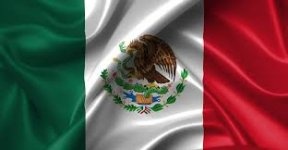By: Daniel Nardini
 Mexico, like almost every country in the Americas, is a republic with a president, a congress, and a constitution establishing a republican form of government. This was not always so. It is hard to imagine now, but Mexico began its independence as a monarchy. When we think about countries in the Americas becoming independent from Spain, we see every one of them becoming a republic. But in the beginning, Mexico bucked this trend (the only other independent country to be an exception was Brazil, which established itself as the Brazilian Empire from 1822 to 1889). Unlike Brazil, which was ruled by a member of the Portuguese royal family, the first emperor of Mexico was born and raised in Mexico of Spanish blood but who had no connection to the Spanish royal family. And unlike Brazil, which accepted its king from Portugal Prince Dom Pedro as King Pedro I because of his ties to the Portuguese royal family, Mexico’s king Agustin de Iturbide (proclaimed Agustin I) became emperor because he was popular with the Mexican ruling elites and the Mexican people.
Mexico, like almost every country in the Americas, is a republic with a president, a congress, and a constitution establishing a republican form of government. This was not always so. It is hard to imagine now, but Mexico began its independence as a monarchy. When we think about countries in the Americas becoming independent from Spain, we see every one of them becoming a republic. But in the beginning, Mexico bucked this trend (the only other independent country to be an exception was Brazil, which established itself as the Brazilian Empire from 1822 to 1889). Unlike Brazil, which was ruled by a member of the Portuguese royal family, the first emperor of Mexico was born and raised in Mexico of Spanish blood but who had no connection to the Spanish royal family. And unlike Brazil, which accepted its king from Portugal Prince Dom Pedro as King Pedro I because of his ties to the Portuguese royal family, Mexico’s king Agustin de Iturbide (proclaimed Agustin I) became emperor because he was popular with the Mexican ruling elites and the Mexican people.
Before we go into why Mexico became a monarchy, we must first look at Iturbide and why he eventually became an emperor. Agustin de Iturbide was a general in the Royal Spanish Army that held control of New Spain (Mexico) when it was a colony of Spain. Hence, he owed his loyalty the the Spanish Crown. Before 1816, he was a loyal monarchist. However, the Spanish viceroy of New Spain had Iturbide removed from command over unsubstantiated accusations of corruption and cruelty. None of these allegations were proven, and Iturbide was eventually restored to his command. Iturbide never forgot this slight on his honor, and from this he had a change of heart in fighting the Mexican rebels then led by Vicente Guerrero. In the 2000’s, correspondence between Iturbide and Guerrero has been discovered from the archives. It was clear that by that point Iturbide no longer viewed Guerrero or his rebels as the enemy, and secretly negotiated with the rebels to try and overthrow Spanish rule.
For New Spain to become independent, the forces of New Spain’s ruling class and the Roman Catholic Church on the one hand and the republicans and rebel forces on the other had to make an alliance. This they did in the Plan of Iguala which provided what are known as the Three Guarantees: freedom from Spain, the supremacy of the Church, and the right of all inhabitants of New Spain to be equal citizens of an independent state. With all factions of New Spain—the conservatives (being made up of monarchists and the Church) and the liberals (being made up of republicans)—unified against the Spanish Crown, New Spain became independent. This newly independent state became known as Mexico (after the great Aztec Empire).
They all had agreed that Mexico should be independent, but the conservatives and the liberals did not agree on what form of government Mexico should have. The conservatives wanted a monarchy ruled by a European from a royal blood line, The liberals wanted a republican form of government. Since the conservatives were in the majority (through the power of the Church), Mexico became a monarchy. Since no European royal family member came forward to claim the Mexican throne, the conservatives proclaimed Iturbide as Agustin I. This proved to be a popular move, and Iturbide was proclaimed emperor. Agustin I succeeded in briefly bringing some semblance of economic stability to Mexico, and he had elections held for the new Mexican Congress. Even though the United States was not too thrilled about Mexico being a monarchy, the U.S. government nevertheless recognized the independence of Mexico. One important thing Iturbide did was to design and create the Mexican flag. It was Iturbide who designed the green, white and red tricolor flag with the Aztec eagle sitting on a cactus eating a snake that remains the flag of Mexico today (minus the crown over the eagle’s head symbolizing the monarchy).
Agustin I’s reign barely lasted a year. The new Mexican Congress was filled with liberals who disdained the monarchy. Worse, because Mexico’s national treasury was empty due to all of the years of war and rebellion, Agustin I could not pay his own army. The army, in league with the Congress, revolted and overthrew Iturbide in 1823, driving him into exile. Once gone, the liberals proclaimed Mexico a republic, and Iturbide a traitor. What Iturbide did not know was that a warrant for his arrest and execution had been issued. Because of the instability in Mexico due to the conflict between the conservatives and the liberals, there was also a fear that Spain might take advantage of the situation and try to reconquer Mexico. Under these circumstances Iturbide offered his services to fight for his country against Spain. The conservatives, hoping to strengthen their support in Mexico, encouraged Iturbide to return. Unfortunately upon returning to Mexico he was arrested by officers loyal to the republic and then executed by firing squad on July 19, 1824. His body was quickly buried in the parish church of Padilla. His death brought outrage to the conservatives, and the conflict between the Mexican conservatives and the liberals would continue for another 40 years. In 1839, Mexican President Anastasio Bustamante had Iturbide’s remains interned in the Chapel of San Felipe de Jesus in the Mexico City Cathedral, where they remain today. Bustamante elevated Iturbide to the status of national hero. Even though the Congress in 1839 was still made up of the many liberals who had condemned Iturbide, this time they honored him as one of the principle leaders of Mexico’s fight for independence.











